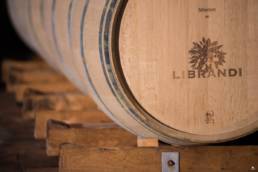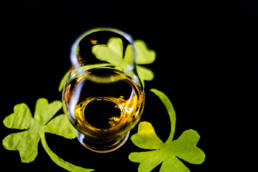FMN – June 2021 – Wines Drinking Above Their Price Point
Some will say that summer is on the horizon but for us in the southeast, summer has already shown its sweaty heat-flushed face. As the alcohol (in the thermometer) begins to rise, we look for thirst quenching beverages for the poolside, beach or just because proverbially (and literally) the masks are coming off. With everyone impacted economically over the last year, we need these summer sippers to exert as little impact on our wallets as possible.
Every wine variety, region and style have their “budget” examples, with varying levels of success. Some wines are just incredibly challenging to make due to the nature of the variety or the ruggedness of the vineyard. There are also certain steps that I consider important in the process that raises the cost of production and thus the cost of the wine. Most consumers would be more than happy to pay a few dollars more per bottle for wines where MOG (material other than grapes) are sorted out. I’ll refrain from the details but imagine all the other creatures that live in the vineyard and potentially could become a part of your wine. I’ll let someone else drink that three dollar bottle from the box stores.
There are, however, producers that are able to make good wines at a reasonable price point. They may not be the top of their class when compared to those five times the cost but they remain an incredible value. These are the types of wines that I still love to discover, drink and share with others.
Although we have unfortunately become accustomed to the diluted citrus water that some market under the pseudonym Sauvignon Blanc, many consumers have yet to experience what this variety truly has to offer. This parent to Cabernet Sauvignon can be seen all over the world but it seems to perform better in cool climates where the alcohol can be kept in check and ripening slowed for full flavor development. In warmer areas, we see sugar ripeness reached before phenolic ripeness resulting in high alcohol with little flavor.
New Zealand figured out the enigma that Sauvignon Blanc can present. The best have a slight thiol element (tropical fruit) along with the slight greenness that occurs from the pyrazine component. Although I love the old-world styles, especially those in Loire Valley, New Zealand has truly developed their own style. This, in turn, has influenced the rest of the world to pay closer attention to their picking times and balance between sugar and phenolic development resulting in better quality wines.
Another misunderstood grape, largely due to overproduction, is Riesling. This variety has a wide range of styles, from the bone dry to the unctuous dessert wines; Riesling can seemingly do it all. Unfortunately, the consumer was fed these overcropped examples with overt sweetness resulting in Riesling becoming known as the grape for cheap, sweet German wines.
A vigilant producer understands that the type and level of the acidity can proverbially make or break this wine. As the grape ripens the sour malic acid decreases and the citric like tartaric acid can build. The key is balancing the acid type and level with the ever-increasing sugar development. Riesling can build impressive amounts of sugar which can manifest as an issue with excessive alcohol levels or excessive residual sugar (if it transcends the acidity’s ability to balance). When all these elements are in harmony, however, these wines can be noteworthy. Unfortunately, the cloyingly sweet (unbalanced) wines of yesteryear still haunt this variety’s reputation.
Rarely do the words “value wine” and Pinot Noir occur in the same sweet breath of this wino. I’m certain you can find a wine labeled as Pinot Noir for a fiver to seemingly prove me wrong. I’ve tasted these heavily over-extracted, high alcohol wines that were “balanced” with the water hose treatment and then bottled under some fairly recognizable labels. Not to sound overly pretentious, but those are not Pinot Noir and shame on them for making us think they are.
I’m a fan of rosé wines but am saddened by where the excessive popularity has driven the style. There certainly is nothing wrong with a pop-and-drop overly chilled thirst-quenching pink wine that helps battle the excessively warm summer days. I’m guilty of consuming and thoroughly enjoying these as well. My angst comes from the fact that the myriad of pink wines on the shelves have little diversity in expression. No matter the grape varieties listed on the label, they all seem as if they could be made in the same vat and just slapped with different labels.
Recently, I had the pleasure of tasting through a few domestic rosé wines made from the Pinot Noir grape. I realize now that I can find a good Pinot based wine at a value, it just need be a rosé. Not only do these wines fit the bill of light and refreshing, they don’t attempt to wrongfully pronounce themselves as a “Provincial” style. True rosé wine producers in Provence will be rebuilding the reputation of their wines for generations due to this marketing debacle.
As market tastes wax and wain for certain areas and varieties, values can be had at some of the most unusual places. As I was tasting through some Italian wines, I was reintroduced to an area I had not visited for some time, Valpolicella. Those familiar with Italian regions will recognize this area as that of the well-known Amarone; produced with grapes dried on racks until raisined. These wines can have an impressive price tag due in part to the labor-intensive production processes.
The still wines made from the same blend of grapes, the same production area and by the same producers are simply labeled under the Valpolicella appellation name. Long overshadowed by the Amarone della Valpolicella fame, these wines have an expression of the Corvina grape that is overtly Italian and wonderfully expressive. As these wines become “discovered” by the Italian restaurants looking for something different than their wicker basket wines, the prices are sure to rise. While these remain a hand sell for many distributers, I will be consuming them in leu of the more well-known Italian regions.
So if you are looking to lighten the economic impact of supporting your habits without compromise, try some of these interesting discoveries. Although cutting your alcohol consumption can save some coin, you and I both know that this is quite unrealistic and puts us all in a sad state.
Suggested Wines:
Ponga Sauvignon Blanc 2020 Marlborough, New Zealand (SRP $13)
Honestly, I am a bit surprised by the intensity of aromatics and complexity of a Sauvignon Blanc at this price point. There are aromas of juicy orchard fruit (peach), fruit blossom, tropical citrus (pineapple), lychee, and a green pungency (pyrazine) common among these New Zealand Sauvignon Blancs. The dry palate has a mouth-watering, upfront, acidity that provides a sturdy structure that the other elements are woven around. The medium plus palate provides a surprisingly pleasant viscous mouth-feel. There are flavors of unctuous tropical citrus (tangerine), citrus pith, peach nectar, and a steeped dried herbal component. The finish is citric and pungent with a palate cleansing acidity. Pair this wine with softshell crab, grilled white fish, goat cheese tart.
Clean Slate Riesling 2019 Mosel, Germany (SRP $12)
The nose has notes of ripe orchard fruit compote (pear, apple), tropical (honeydew) and white flowers. The perception of sweetness is slightly held in check by the evident citric-like acidity and emerges through the viscous palate and rich ripe fruit notes. The palate mirrors the nose with honeydew, orchard fruits and an added brined tropical citrus. The residual sugar helps in pairing this wine with spicy Asian dishes (sushi / Thai), grilled brined pork chop, creamy cheeses (brie).
Stoller Family Estate Pinot Noir Rosé Willamette Valley, OR (SRP $28)
This whole cluster pressed rosé has aromas of fresh strawberry, cherry / cherry stone, watermelon rind, and ripe Asian pear. The dry palate has pronounced creshendowing acidity, medium body and well-balanced alcohol. There are flavors of cherry, tropical citrus (blood orange) and salted melon. The finish is long with tropical citrus and a mouth cleansing acidity. Although a slight chill is welcomed, many tend to overchill their rosé (10 – 15 minutes in the freezer). This wine has versatility in pairing with brunch (salmon lox), dinner (grilled barbecue chicken), or as a mid-meal palate reset with grilled beet and goat cheese salad.
Zenato Valpolicella Classico Superiore 2017 Sant’Ambrigio, Valpolicella Classico (SRP $17):
This wine is composed of 80% Corvina, 10% Rondinella, and 10% Oseleta. The nose has pronounced aromas of raspberry, cherry, currant, dried black tea leaves, wooden tea box, woody herbs and unsweetened cocoa powder. The dry palate has a tart crunchy fruit acidity, medium body and flavors that mirror the nose. The tannin structure is fine grained and perfect for those wanting a red wine but have an aversion to mouth-drying tannins. I recommend 10 minutes in the fridge, especially if consuming in the heat. This wine would be a pleasure to sip on its own but could easily accompany cured meats (salami, speck, prosciutto, etc.), pork tenderloin, and wild mushroom ravioli.
** All wines provided by as tasting samples **



